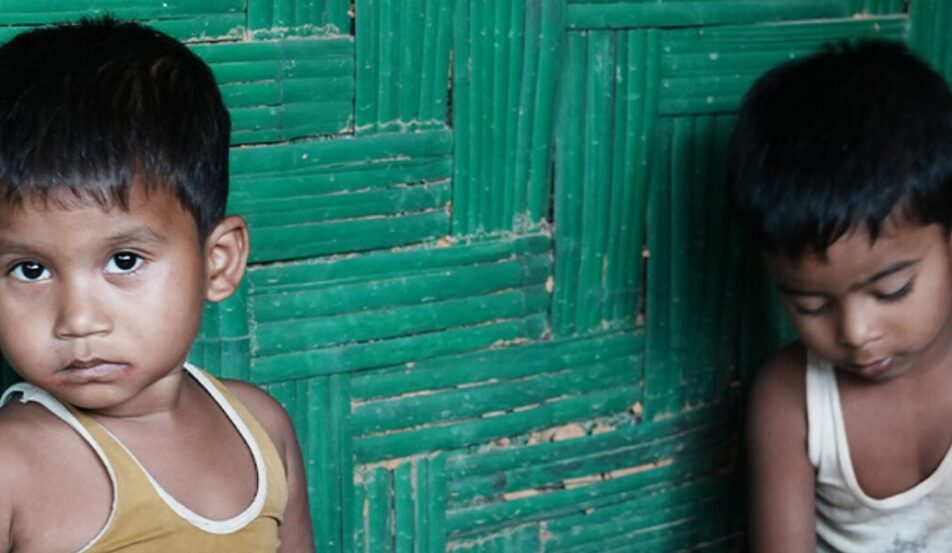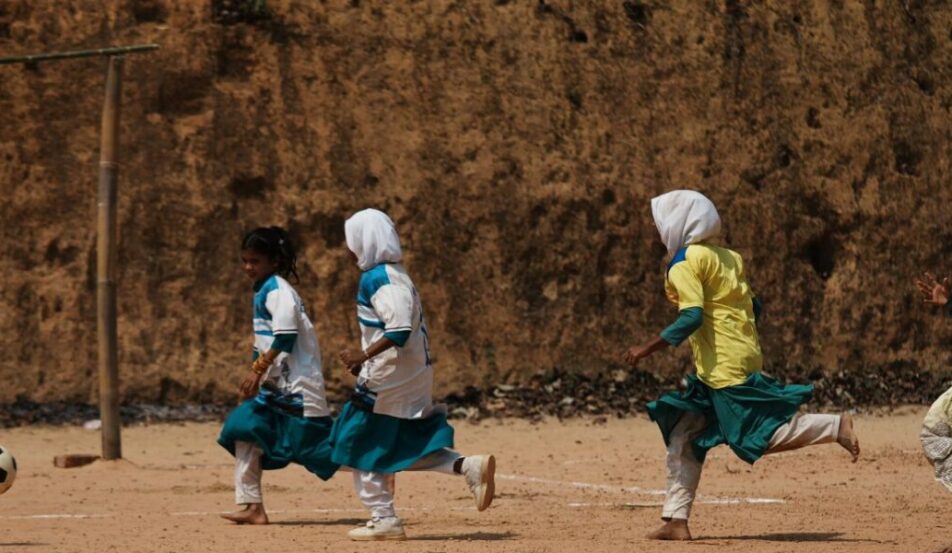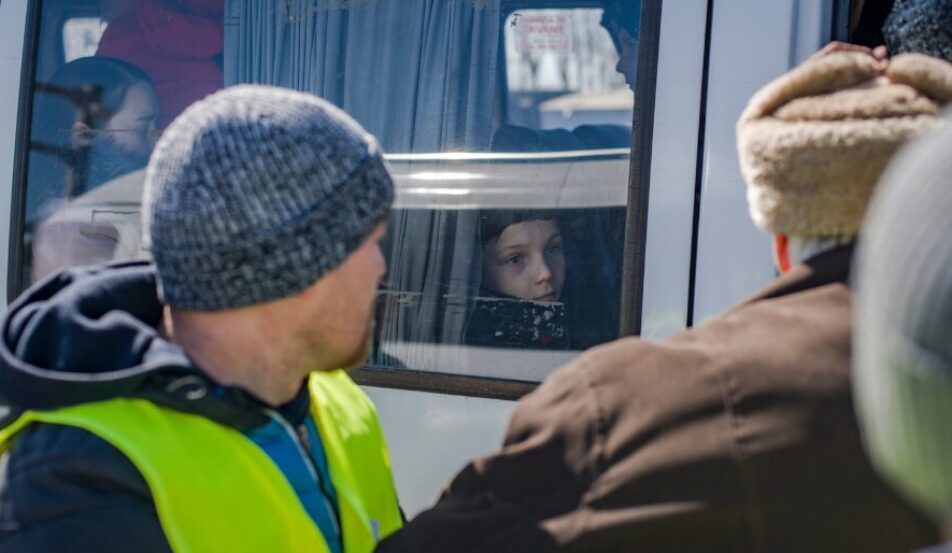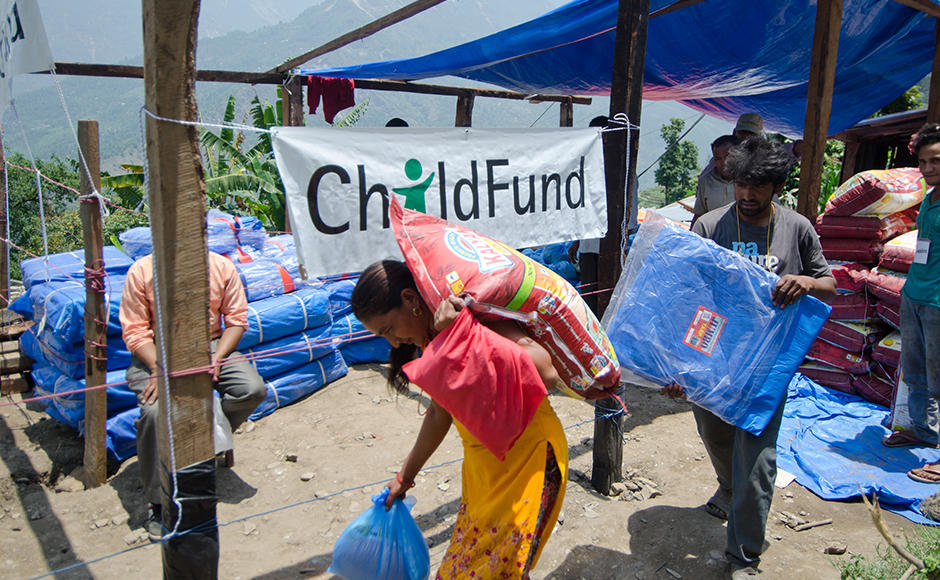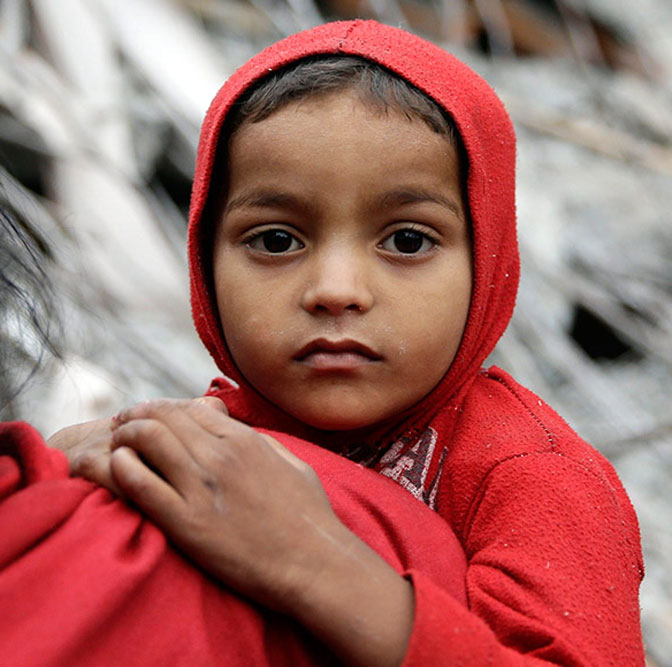More than one million people continue to require food assistance to meet their daily dietary needs. Before the rainy season commenced, ChildFund completed a second round of food distributions for 3,103 families who were low on food supplies in the four remote communities we are supporting in Sindhupalchok. Each family received a food basket based on UN recommendations of 30kg rice, 4kg dhal, 1kg salt and 2 litres of cooking oil, which is benefitting almost 12,000 people.
In these rural villages, where most families rely on agriculture for their livelihoods, many people will be able to use the rations they received along with the food they have remaining from their terraced fields. Since May, ChildFund has provided a total of 161 metric tons of essential food items to families in need, with a third distribution planned in the coming weeks.
ChildFund is also helping these families set up temporary shelters, providing tarpaulins and groundsheets to help weather the monsoon, which will last until the end of August.
“There is still so much need, especially in the reconstruction of homes and schools, and restoring people`s livelihoods ,” says Mariko Tanaka, ChildFund`s country director in Nepal.
“We would like to extend our gratitude to everyone in Australia and around the world who has donated to ChildFund`s emergency response. It is thanks to your kind support that we are able to continue the recovery effort for children and families in Nepal.”
Learn more about ChildFund’s emergency response in Nepal here and here.
Photo credit: Philip Maher



